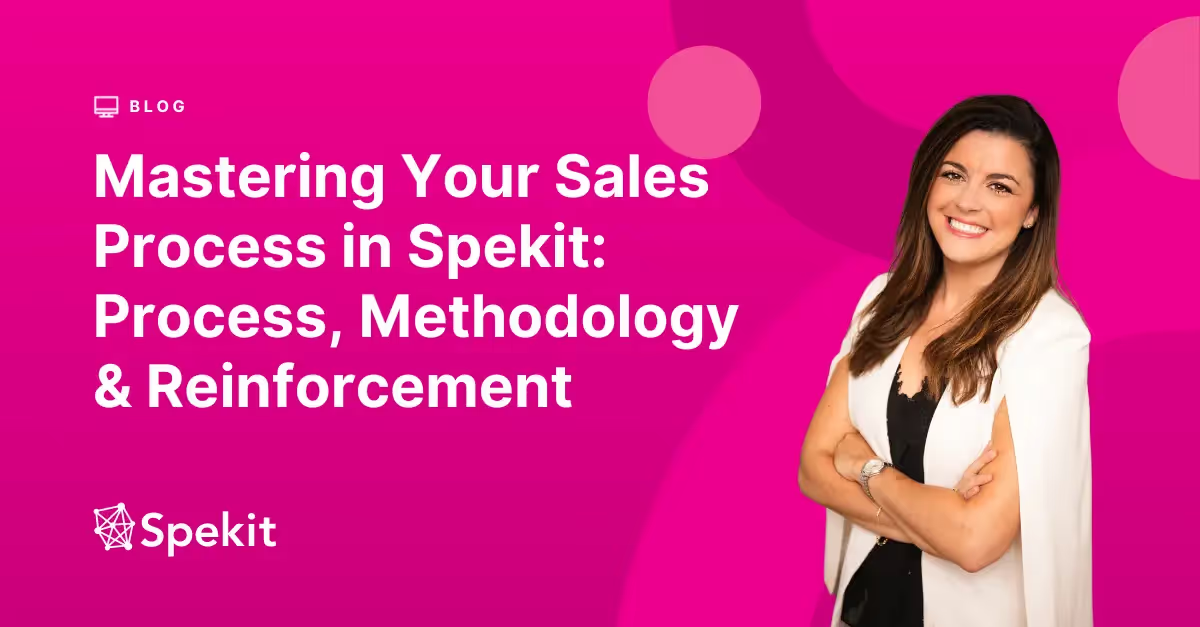How often have you found yourself struggling to remember crucial details from a sales training session or webinar? Frustrating, right? If this scenario sounds familiar, you’re not alone.
These memory gaps are not a result of a lack of attention or comprehension, but rather due to a phenomenon known as the ‘forgetting curve’.
The forgetting curve illustrates how our memory of new information fades over time if we don’t attempt to retain it.
We forget up to 90% of new information within the first week!
These forgetful moments can be particularly frustrating in the dynamic and competitive world of sales, where remembering important details and processes are crucial to your success. The modern sales process has become increasingly complex and having a well-defined sales process is essential to closing deals effectively and winning over clients.
But what exactly constitutes a sales process, and how can you optimize it to win more deals? Furthermore, how can you combat the “forgetting curve” and ensure that your team retains more of the crucial information they learn in their sales training?
In this post, we’ll explore how Spekit, a leading Salesforce integrated just-in-time learning solution, can reinforce your sales process and provide the necessary support to your sales team for success.
Let’s dive in.
Demystifying the Salesforce Sales Process
The sales process is your strategic roadmap for winning deals. It’s a sequence of defined steps your salespeople follow to take a potential customer from early-stage prospecting to a closed deal.
The typical sales process includes:

A well-structured sales process is pivotal to your team’s success. Not only can it improve the chances of closing more deals, but it also enables your team to stay organized, predict potential objections, and measure sales performance effectively.
Understanding the Components of the Salesforce Sales Process
Every Salesforce sales process comprises several key components that work in synergy to drive sales success.
Plays
Plays are the individual steps in a sales process. They can be as simple as a call or email, or they can be more complex, such as a demo or presentation, and should be clear, concise, and easy to follow. It is also important to customize your plays so that they align with the specific needs of your target audience.
Stages
Stages are the different phases of a sales process, encompassing discovery, qualification, solutioning, negotiation, and closing. Each stage should be well defined and easy to understand. They should also be structured to align with your sales goals.
Methodology
Methodology is the way you approach your sales process. It can be as simple as a checklist or as complex as a step-by-step guide. Your sales methodology should be based on your own experience and the best practices of other sales professionals.
Enablement
Enablement is the process of providing your sales team with the knowledge and resources they need to be successful. These resources can include training, sales playbook software, and FAQs. Your enablement program should be tailored to the specific needs of your sales team, ensuring that they have access to well-structured resources, such as a content organization guide, to easily find and utilize relevant training materials.
Creating an Effective Salesforce Sales Process
Creating a play
Start by identifying the specific step in your sales process that you want to create a play for and then write a clear, concise description of that step. Next, include any relevant information, including call scripts, email templates, or FAQs. Take the time to format your play so that it can be easily read, understood, and followed.
Creating a stage
To create a stage, start by identifying the different phases of your sales process and create a stage for each phase. Include a description of the phase as well as the plays that are associated with it.
Creating a methodology
Begin outlining your sales methodology by identifying the overall approach to your sales process. Then, create a methodology that outlines your key steps and best practices. As with other steps in the creating a sales process, ensure that your methodology is clear, concise, and easy for your team to follow.
Creating a sales enablement document
First, identify the knowledge and resources that your sales team needs to be successful. Next, create a document that includes this information. Be sure your sales enablement document is clear and concise to reduce confusion and foster engagement.
Optimize Your Sales Process with Spekit
Leveraging Spekit to bolster your Salesforce sales process allows you to build a well-defined, trackable sales process, collaboratively create and share sales content, and measure sales performance to pinpoint areas for improvement. By constantly reinforcing the sales process and key training elements within the workflow, Spekit effectively addresses the challenge of the forgetting curve, enhancing knowledge retention and enabling your sales team to close more deals and improve your bottom line.
Want to learn more about building your sales process in Spekit? Watch the full webinar with Spekit CEO, Melanie Fellay, on-demand here.
More like this
Make Every Employee Your Best Employee with Everboarding







